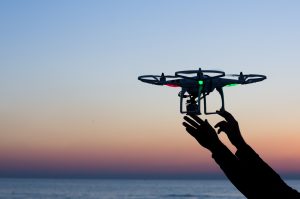According to latest research issued by ABI Research, Drone Industry Powers on in a Post-COVID-19 World to be Worth US$92 billion by 2030. Looking past COVID-19, new regulatory changes and the slow rollout of remote ID and 5G will enable an enormous upscaling of drone operations.
The small Unmanned Aerial System (sUAS) market continues to develop at an impressive pace and is unmarred by the challenges of COVID-19. Global tech market advisory firm, ABI Research, predicts strong growth of the industry worth US$92 billion by 2030. While the pandemic has dented consumer shipments and hindered commercial rollout, this has been mitigated by increased use of drones for public service responses and surveillance by both local and national police forces. Looking forward, new regulatory changes and the slow rollout of remote ID and 5G will enable an enormous upscaling of drone operations, from single remotely operated aircraft to semi-autonomous fleets that will be able to operate beyond visual line of sight courtesy of impending unmanned traffic management (UTM) infrastructure. This will provide the base from which companies like Amazon can launch drone delivery services.
“We have gone through various phases of the drone industry, from its genesis in the military, to the proliferation of consumer drones. Since Chinese developer DJI monopolized that space, the attention has shifted to commercial applications,” explains Rian Whitton, Senior Robotics Analyst at ABI Research. “While some of the initial hype has subsided, providers and end users are refocusing on developing the necessary supporting infrastructure and services to make drone technology viable at scale.”
Overall, the drone market is set to be worth US$92 billion by 2030, with a CAGR rate of  25% over the US$9.5 billion in annual revenue for 2020. Of this revenue, 70% is in the commercial sector (US$63 billion). The largest number of drone registrations are currently in the United States, where the Federal Aviation Authority (FAA) tracks 1.7 million consumer drone pilots and 400,000 commercial operators. China is catching up with 400,000 registered drones, while the European Union (EU) has over 1 million registrants. Among the biggest markets are security and industrial inspection, with growing opportunities in delivery, agriculture, and emergency services.
25% over the US$9.5 billion in annual revenue for 2020. Of this revenue, 70% is in the commercial sector (US$63 billion). The largest number of drone registrations are currently in the United States, where the Federal Aviation Authority (FAA) tracks 1.7 million consumer drone pilots and 400,000 commercial operators. China is catching up with 400,000 registered drones, while the European Union (EU) has over 1 million registrants. Among the biggest markets are security and industrial inspection, with growing opportunities in delivery, agriculture, and emergency services.
With their involvement in the public response to the pandemic, drone companies highlighted their value. Now, the story of the next decade will be the development of key technologies like edge computing, cloud services and 5G connectivity enabling mass deployments, in tandem with regulatory harmonization. “While cloud services will help enable the collection and orchestration of massive amounts of data, 5G will significantly reduce latency for mission-critical drone operations. The advancement of edge computing and processing hardware will also be important, as drones can be untethered from remote operation and become truly autonomous,” Whitton concludes.

These findings are from ABI Research’s Small Unmanned Aerial Systems: Annual Update application analysis report. This report is part of the company’s Industrial, Commercial and Collaborative Robotics research service, which includes research, data, and analyst insights. Based on extensive primary interviews, Application Analysis reports present in-depth analysis on key market trends and factors for a specific application, which could focus on an individual market or geography.
SOURCE ABI Research

